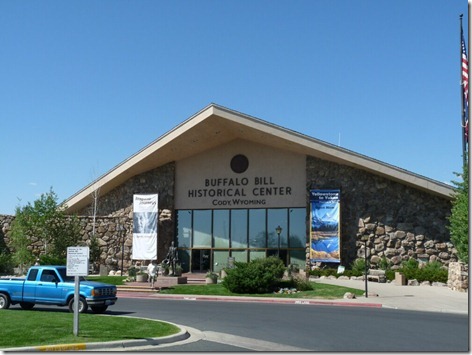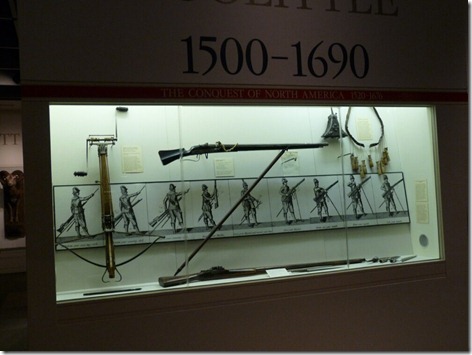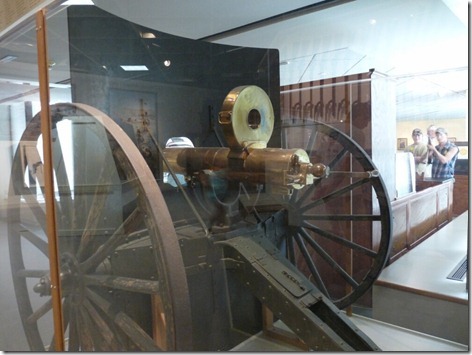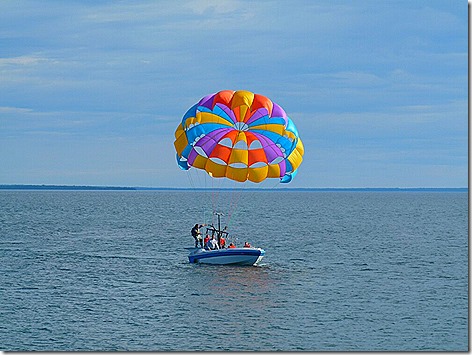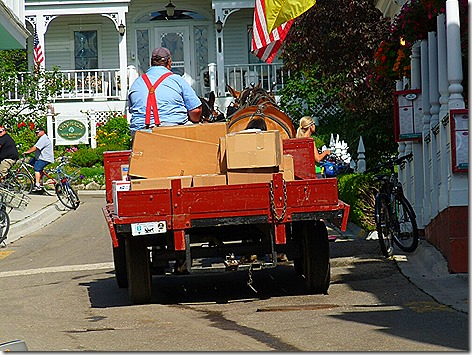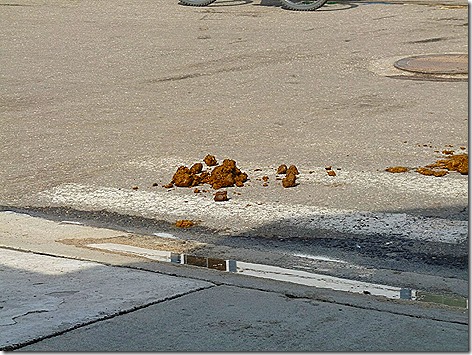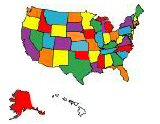Daily Archives: July 25, 2020
A Repeat, Two Reposts, and Mike Rowe . . .
First up, I’ve got another very imaginative Comet NEOWISE photo for you.
Since the link to the CoVid Death Rate chart was messed up last night, I repeated that segment with a corrected link.
I’m sure you’ve probably heard all the news about how WuFlu deaths are skyrocketing in states that were accused of opening too early. Ones like Florida, Texas, and Georgia, for example.
But this interactive chart tells a whole different story.
CoVid Death Rates by state per 100,000 people
But this preview will show you that none of those 3 states are even in the top 15. And that many of the states with the tightest lockdowns are at the top.
And in fact New Jersey and New York have over 10X the death rate of Texas. But Dr. Fauci holds up New York as a model and says they’re doing a great job.
And that’s even with some deaths in Florida being listed as a CoVid death when one died of a gunshot wound to the head, and another died from Parkinson’s.
But follow the science, right?
The following is a repost from Mike Rowe’s Facebook area. I tried to embed it directly from his page, but couldn’t get it to work. So I’ve just posted the piece in its entirety.
I really hope you will take the time to read this all the way though even if you don’t follow the links.
It starts off with a letter from a viewer and then continues with Mike’s answer.
Mike’s illustration about car accidents is spot on, and explains why the nation seems to be panicking over this when regularly see similar numbers from the seasonal flu.
And his decision on how he is handling this situation is pretty much Jan’s and my view also.
Again, please take the time to read this.
Mike,
In a recent post, you said you’ve been to Tennessee and Georgia, giving speeches and filming for your new show. Before that, you were on the road shooting for Dirty Jobs. Is it really so important to film a television show in the midst of pandemic? Is it responsible of you to encourage this kind of behavior when infection rates are spiking? Don’t you watch the news? More and more cases every day – aren’t you concerned?
Darlene Gabon
Hi Darlene
Of course, I’m concerned. I’m just not petrified.
On March 15th, the day after my part of the country was locked down, I posted a link to an interview with Dr. Michael Osterholm. I’m posting it again, because I believe you and everyone else in the country would benefit from listening carefully to what he has to say. https://bit.ly/2WLOM6o
Dr. Osterholm is the Director of Infectious Disease Research and Policy. This is the same epidemiologist who ten years ago, predicted a coronavirus would come from China and turn our country upside down. In his book “Deadliest Enemies,” he anticipated the utterly irresponsible way in which the media would report on the situation, the completely opportunistic and shamelessly political way our leaders would likely react, and the unprecedented chaos and confusion that would arise from all the mixed messages from the medical community. His resume is unexampled, https://bit.ly/3jvzQTW, and his analysis of the situation is the most logical and persuasive of any I’d heard so far.
He’s also the only expert I know of who hasn’t walked back his numbers, reconsidered his position, or moved the goalposts with regard to what we must do, what we can do, and what he expects to happen next. I say all of this because Dr. Osterholm publicly predicted – in early March – that we could conservatively see over 100 million COVID cases in this country, with a very strong possibility of 480,000 fatalities – even if we successfully “flattened the curve.”
It took me a few weeks to accept this scenario, because 480,000 fatalities is a frightening number, and lot of other experts were saying lots of conflicting things. But eventually, I came to the conclusion that Dr. Osterholm was probably correct, and quickly navigated the four stages of grief that usually precede acceptance – denial, anger, bargaining, and depression.
By late April, I had come to accept Dr. Osterholm’s predictions as a matter of fact. Since then, I’ve had three full months to come to terms with the fact that, a) I am probably going to get COVID-19 at some point, b), I am almost certainly going to survive it, and c), I might very well give it to someone else.
I hope that doesn’t sound blasé, or glib, or fatalistic, or selfish. Four-hundred eighty thousand deaths is an obvious tragedy, and I’m deeply sympathetic to all who have been impacted thus far. I’m also very concerned for my parents, and everyone else in a high risk category.
But when Dr. Osterholm says that COVID can be slowed but not stopped, I believe him. When he says a vaccine will not necessarily hasten herd immunity, I believe him. And when he says that people have confused “flattening the curve” with “eliminating the virus,” I believe him.
Thus, for the last three months, I’ve been operating from the assumption that this is a year-round virus that’s eventually going to infect 100 million people and kill roughly 1/2 of one percent of those infected, conservatively. I’ve accepted those numbers. Unfortunately, millions of others have not. Many people have no sense of where this is headed, and I understand why. They’ve been betrayed by a hysterical media that insists on covering each new reported case as if it were the first case. Every headline today drips with dread, as the next doomed hotspot approaches the next “grim milestone.”
And so, for a lot of people, everyday is Groundhogs Day. They’re paralyzed by the rising numbers because the numbers have no context. They don’t know where it will end. But Dr. Osterholm says he does, and I’m persuaded that he’s correct. He might be wrong, and frankly, I hope he is, but either way, he’s presented us with a set of projections based on a logical analysis, and accepting those projections has allowed me to move past denial, anger, bargaining, and depression, and get on with my life with a better understanding of what the risks really are.
Fact is, we the people can accept almost anything if we’re given the facts, and enough time to get evaluate the risk and make our own decisions. Last year in this country, there were six million traffic accidents and 36,000 fatalities. Tragic, for sure. But imagine for a moment if no one had ever died from a car accident. Imagine if this year, America endured six million traffic accidents and 36,000 fatalities…for the first time ever.
Now, imagine if these accidents and fatalities – over 16,000 and 90 per day respectively – imagine if they were reported upon like every new incidence of COVID. What would that do to our willingness to drive? For a while, I suspect it would keep us all off the roads, right? I mean, six million accidents out of the blue is a lot to process, and 36,000 deaths is scary – especially if you don’t know how high that number could get. It would take us a while to access the risk, before we blindly hopped into our cars again.
Eventually though – after getting some context and perspective – we’d be able to evaluate the relative danger of operating a motor vehicle. Then, we could decide for ourselves when to drive, where to drive, and how much to drive. And so we do.
Again, don’t misunderstand. I’m not ignoring COVID, or downplaying COVID, or pretending the risks at hand aren’t real. Nor am I comparing COVID cases to car accidents – I’m simply comparing the fear of each to the other, and the fear that always accompanies uncertainty. I don’t want to get this disease or give it to someone else, any more than I want to be in a car car wreck that injures someone else.
But I’ve accepted certain things about the pandemic, and now, I’ve gotten used to the risk as I understand it. I take precautions. I get tested as often as I can, and if I can’t physically distance, I wear a mask – especially around higher risk people. Likewise, I wear a seatbelt, obey the speed limits, and check my mirrors before changing lanes. Yes – I’m aware that we’d all be a lot safer if we kept our cars in the garage. I’m also aware we’d be a lot safer if we all kept ourselves in the house. But that’s not why cars, or people, exist.
Anyway Darlene, that’s a long way of saying that I have accepted Dr. Osterholm’s numbers, and now, after three months of acceptance, I’ve made a decision on how I wish to live my life. Sooner or later, you will too. We all will.
Mike
PS. My foundation is selling masks to raise money for our next work-ethic scholarship program. They’re going fast…
https://www.bfit540.com/products/mike-rowe-works-face-mask
Next up, we’ve got our visit to Cody, WY in 2011, and then our visit to Mackinac Island in 2013.
July 25, 2011
Buffalo Bill and Granny . . .
Today was another ‘play tourist’ day, so after coffee at the rig and a quick stop at McD’s for a breakfast sandwich we headed over to the Buffalo Bill Historical Center.
Today would be a ‘twofer’ with a 1 hour trolley ride around Cody, and then coming back to the Center to go through the five museums inside.
The trolley ride was fun and interesting, with a lot of good information from both Chuck, the driver, and Greg, the narrator.
It was interesting to discover that Cody (the town) was designed from scratch by Buffalo Bill to be a ‘tourist’ town. It was laid with very wide streets like the ones Buffalo Bill had admired when he toured Europe with his Wild West Show.
Also interesting was the story of his death and burial in 1917. He died in Denver, CO while visiting his wife Louisa. Cody hated Denver and its leaders with a passion, because they had once foreclosed on him due to a debt he owed.
His 1906 will stated he wanted to buried on top of Cedar Mountain just outside his beloved Cody. However when he died in Denver, the town supposedly paid his wife $10,000 to bury him there.
To the public they said that Cody on his deathbed had said he had changed his mind and wanted to be buried in Denver. The folks in Cody said “Yeah, right” and started hatching plans to steal his body back.
Hearing about this, the Denver leaders stationed the National Guard and a WWI tank at the grave. They kept this up for four years before finally sealing off the gravesite with 20 tons of concrete. You would think this was the end of the story, but it wasn’t.
Buffalo Bill died in January 1917 but wasn’t buried until June when the ground thawed out. Now as the story goes, a vagrant died in Cody who somewhat resembled Buffalo Bill, so the town mortician and several townsfolk got together and did some creative makeup on the vagrant’s body so he looked even more like Cody. They then put the body in a automobile, drove down to Denver, snuck into the funeral home where Cody’s body was being stored, swapped corpses, and hightailed it back to Cody.
They then buried his body on top of Cedar Mountain like he wanted, in a unmarked grave so Denver could not steal him back.
Now all this might seem kind of fanciful, but there was a break-in at the funeral home recorded in a police report, and apparently no one thought to look closely at the body, which although it looked like Buffalo Bill, was more than 6 inches shorter than Cody’s slightly over 6 feet.
Now this story didn’t come out until after Denver had concreted over the gravesite, so there was no way to really check.
But the people of Cody, WY say they know for sure.
My favorite part of the Historical Center was the Firearms Museum.
In the main hall they have over 1200 firearms on display, starting from the 1500’s to the present.
They also have rooms by manufacturer, with pretty much ever gun that Remington, Colt, Winchester, Browning, Savage, etc., have ever produced.
They also have a number of unique firearms, like the very first production M1 Carbine from Winchester in 1941. During WWII they made over 800,000 of these.
Another very unique weapon is this Colt 1883 Gatling Gun.
It was acquired by Winchester in 1949 to test the feasibility of adding an electric motor to power it. This electric-powered Gatling Gun was the prototype of the M-61 Gatling Gun still in use on today’s military aircraft.
Except instead of firing 200 rounds per minute of .45-70 caliber ammo, the Vulcan fires 6000 rounds per minute of 20mm ammo (approx. .78 caliber)
I think one of these would be real nice mounted on the roof of our RV. Idiots would think twice about cutting me off.
Another little fact about Gatling guns. Custer had two of them with him at the fort before he took off chasing Indians, but he didn’t take them with him because he thought they’ve slow him down.
I imagine he was rethinking that decision a little while later.
According to the one of the museum displays much of how we see Indians of that era, tipis, warbonnets, warriors on horseback. etc. comes from Cody’s Wild West Show. But these only applied to a very few tribes of the Plains Indian.
I guess this is like supposedly much of the way we visualize Santa Claus today comes from Coca Cola advertisements of the last 100 years or so.
And apparently like many of today’s rock singers, Buffalo Bill’s Wild West Show did ‘Final Farewell Tours’ for a number of years. An ad in the Stockton Evening Mail of October 8, 1910 states that “Buffalo Bill Positively Bids You Good-By”. But 3 years later the show was still on tour around the country, including another show in Stockton 18 months later.
I’ve got a lot of other pictures but I’ll save some for later on a slow news day.
Leaving the Center about 2:30 we had a light lunch at McD’s before heading back to the rig to pick up Jan’s cat, Emma, and take her to the vet
Lately she’s been losing weight, always hungry, and always thirsty. She’s about 15 years old and we wondered if she had diabetes.
But after blood tests and $200 later, it turns out she had hyperthyroidism which should be treatable by a pill twice a day.
I do want to give a big thumbs up to Lifetime Small Animal Hospital here in Cody, and Dr. Erin Pedersen, our vet. She was great!
Two of our other friends recommended Lifetime and they were right.
After getting back to the rig, and a nice nap, we headed out for dinner about 8 pm, and ended up Granny’s Restaurant. It was very busy, and very good, just good down-home cooking.
Coming home we stopped off at Albertson’s to get a large disposable aluminum roasting pan to use as a secondary cat litter box.
Tomorrow we’re going down to Grand Teton National Park for a couple of days and this will make sure we don’t have any messes to clean up when we get back.
More tomorrow from Jackson, WY.
Thought for the Day:
“It takes a great deal of history to produce a little literature,” – Henry James
July 25, 2013
Three Things to Do When Visiting Mackinac Island . . .
1, Watch Where You Walk.
2. Don’t Step In Yellow Puddles.
3. Bring Plenty of Money.
After one of the muffins we got at Tim Horton’s yesterday, Jan and I headed about 50 miles south to St. Ignace, MI to catch the ferry over to Mackinac Island. To allow plenty of time to catch the 10:00 run, we left about 8:15. But making good time we got there about 9:15, just in time to catch the 9:30 trip.
Heading across the lake we found a lot of people already out there ahead of us.
One of the reasons we wanted to make the 9:30 or 10am ferry, is that these two make a quick detour over by, and under the Mackinac Bridge.
The two towers are 550 feet tall, and the suspended roadway between them is over 8600 feet long, making it the longest suspension bridge in the US, and the third longest in the world.
The supporting cables are 24-1/2 inches in diameter and made up of over 12,000 smaller cables woven together. And even though the roadway is open grillwork to let the wind blow through, the bridge can still sway up to 15 feet during high winds. Hopefully not this Saturday.
Finally approaching the island, the first thing you can really see is the world-famous Grand Hotel, site of two movies, including 1979’s “Somewhere In Time” with Christopher Reeve and Jane Seymour.
Pretty much everywhere you look is a postcard view.
Getting our feet back on dry land, we spent some time walking the streets and checking out the scenery.
There are flowers everywhere you look.
Except for two police vans and three fire trucks, no motorized vehicles are allowed on the island. So this wagon is the UPS delivery van. There is a driver for the wagon, but a real UPS guy in his brown shorts actually delivers the packages.
And this is why you need to watch where you walk when you’re on the island. I also think it’s why the flowers are so bright and the grass is so green. They’ve got to do something with all that ‘fertilizer’.
Taking the Carriage Tour, we drove past the Grand Hotel, the only hotel I’ve ever seen that charges you $10 just to walk into the place. Needless to say, we didn’t visit.
Our next stop along the tour was Arch Rock that looks down on the beach way below.
Finally leaving the carriage tour at Fort Mackinac, we decided to have lunch at the Tea Room there that overlooks the harbor.
One of the other ferry companies uses jet boat ferries, giving them this distinctive “rooster tail”.
There’s even this beautiful two-masted schooner tooling around the harbor
Sometimes there are so many ferries coming into the harbor it’s almost a traffic jam.
Looking down from our restaurant perch, seeing all the neat, colorful houses, manicured lawns, and brilliant flower gardens, I almost expected to see a large white ball named Rover go bouncing by.
Walking back down the hill from the Fort, we once again walked along the quaint streets, checking out the many shops, even stopping to buy some of the famous Mackinac fudge from Murdicks.
Later we spent an hour or so sitting in the rockers on the big front porch of the Lakeview Hotel, just people watching. Very nice.
A little later we caught the 4pm ferry back to St. Ignace on the mainland, giving us this great view of the Mackinac Bridge, a bridge that we’ll be crossing in our rig this coming Saturday as we head for Elkhart.
Before getting back on I-75N we stopped for gas, giving Jan a thrill and ending her day on a very moose note.
Taking our exit off I-75 into Sault Ste. Marie, we drove through a nearby Holiday gas station to check out rig access to tank up with diesel when we leave here on Saturday.
Thought for the Day:
We contend that for a nation to try to tax itself into prosperity is like a man standing in a bucket and trying to lift himself up by the handle.~Winston Churchill (1874-1965)





